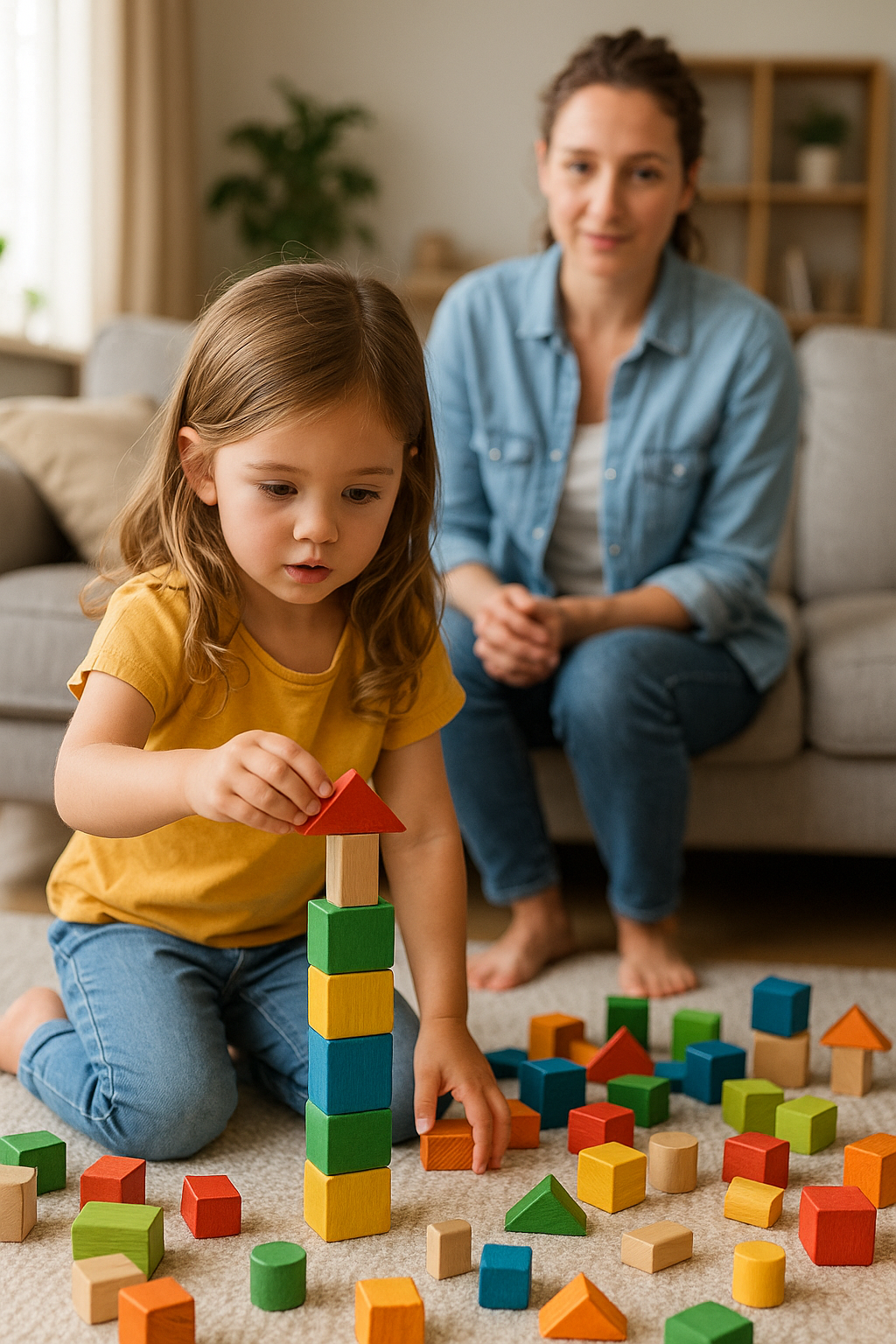To an adult, play might seem like just a way to pass the time. But for a child, play is serious business. It’s how they explore the world, process emotions, build relationships, and learn fundamental life skills. Play isn’t just fun—it’s essential for healthy development.
In this article, we’ll explore why play matters, the types of play that support development, and how caregivers can create an environment that encourages learning through play.
Why Play Is Crucial for Children
Children don’t play instead of learning—they learn through play. Play allows children to:
- Develop social skills
- Practice language
- Exercise their bodies and coordination
- Explore imagination and creativity
- Learn problem-solving
- Build emotional resilience
Play supports all areas of development—cognitive, physical, emotional, and social.
Cognitive Benefits of Play
When children engage in pretend play, puzzles, or building blocks, they develop:
- Attention span
- Memory
- Planning skills
- Mathematical and spatial reasoning
For example, building a tower teaches balance and engineering. Pretending to be a shopkeeper involves counting and communication. Even simple games hold layers of cognitive growth.
Social and Emotional Benefits of Play
Play is one of the first arenas where children learn how to interact with others. Through play, they discover:
- How to take turns and share
- How to resolve conflict
- Empathy and understanding others’ feelings
- Expressing and managing emotions
When children pretend to be a parent, a doctor, or a firefighter, they’re processing what they’ve observed in the world and practicing roles in a safe, imaginative space.
Physical Development Through Play
From running and jumping to stacking blocks or coloring, play strengthens the body in many ways:
- Gross motor skills: jumping, climbing, crawling
- Fine motor skills: cutting with scissors, drawing, manipulating small objects
- Coordination and balance
- Body awareness
Children who engage in active play are more likely to develop strength, endurance, and healthy movement habits.
Language and Communication
Play encourages children to talk, listen, negotiate, and express ideas. This happens naturally when:
- They create stories in pretend play
- Explain rules to others in games
- Ask questions and describe what they’re doing
It also introduces new vocabulary and gives context for understanding how language works.
Different Types of Play and Their Benefits
1. Free Play (Unstructured Play)
This is play that children initiate and lead on their own, without set rules or instructions. It’s the most powerful form of learning through play.
Examples:
- Building forts
- Pretend cooking
- Playing with dolls or action figures
2. Physical Play
Movement-based play that helps develop coordination and strength.
Examples:
- Tag
- Dancing
- Climbing or riding bikes
3. Constructive Play
Focused on building or creating something.
Examples:
- LEGO sets
- Puzzles
- Drawing and crafts
4. Pretend (Dramatic) Play
Acting out real or imaginary scenarios.
Examples:
- Playing “house” or “store”
- Pretending to be animals or superheroes
5. Games with Rules
These teach children how to follow guidelines, wait turns, and handle winning or losing.
Examples:
- Board games
- Card games
- Team sports
How to Support Play at Home
You don’t need a fancy playroom or expensive toys to foster healthy play. Here’s how you can encourage it naturally:
- Offer open-ended toys like blocks, dress-up clothes, or kitchen sets
- Create a safe, accessible space where children can explore and move freely
- Make time for unstructured play in daily routines
- Join the play occasionally to model creativity and encourage social interaction
- Follow your child’s lead—observe what they enjoy and support it
- Limit screen time to ensure space for active, imaginative play
Outdoor Play: An Extra Boost
Playing outdoors provides additional benefits:
- Exposure to sunlight (vitamin D)
- Connection to nature
- Opportunities for risky play, which builds confidence
- More space for running, climbing, and jumping
Nature itself becomes a playground—rocks, sticks, mud, and trees spark endless creativity.
Play and Emotional Intelligence
Play helps children:
- Understand how emotions work
- Rehearse calming techniques
- Act out fears or confusing situations
Through play, children can process challenges like starting school, moving, or having a new sibling. It becomes a tool for emotional healing and resilience.
When Parents Say “I Don’t Have Time to Play”
You don’t need to dedicate hours each day. Even 10–15 minutes of undistracted, engaged play can make a huge difference.
Ideas:
- Play a quick board game
- Build a tower together
- Join your child in pretend play for just one “scene”
- Color side-by-side and chat
The quality of your presence matters more than the quantity.
Play Is a Right, Not a Luxury
According to the United Nations Convention on the Rights of the Child, play is a fundamental right. It’s not an optional bonus—it’s a core part of how children grow, thrive, and understand the world.
As adults, we have the opportunity to protect and promote this right every day.
Final Thoughts: Let Them Play
Children don’t need to be taught how to play—they were born with the instinct. What they need is time, space, and freedom to do it. When we make room for play, we make room for growth.
So say yes to the blanket fort. Let them splash in puddles. Let them create nonsense stories, dress like pirates, or build towers taller than themselves.
Because in every silly game, messy project, and quiet moment of pretend—they are learning to be human.
